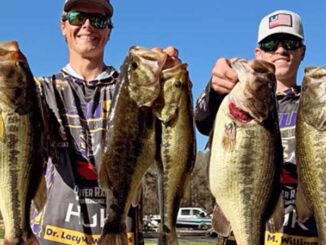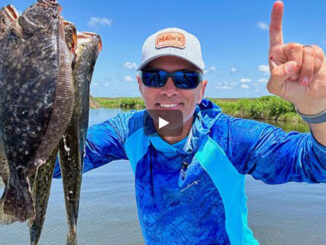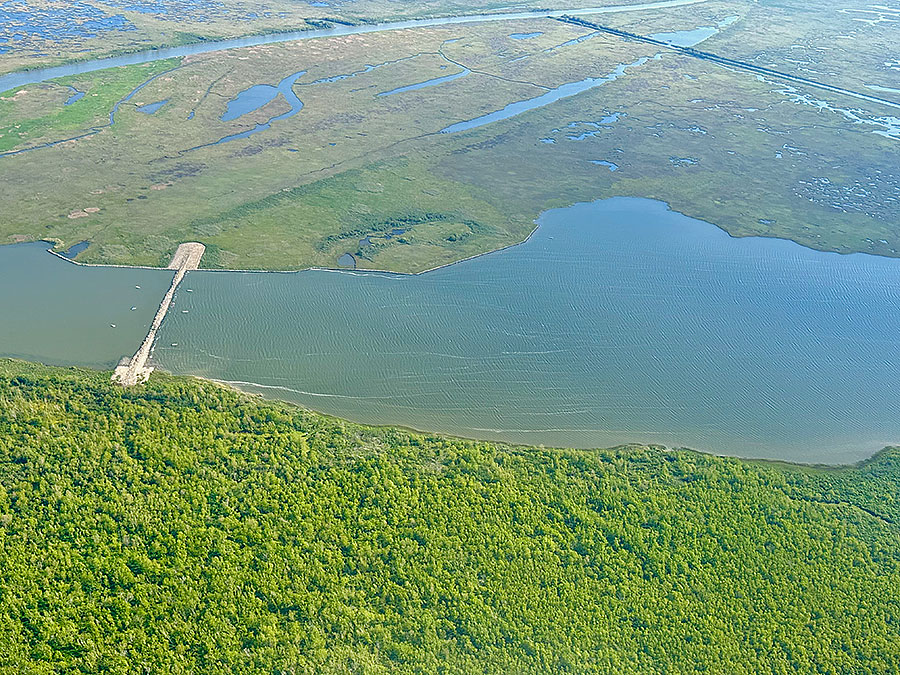
Ensuring populations requires asking questions, developing answers
In the inshore angling community we have a few good rules to work from, such as “find the bait, find the fish,” or “moving water holds the trout.”
Only thing is, how many times have we found the bait or the perfect spot with moving water and we do not catch a single fish? Does it seem like there is much more bait in the Mississippi River estuary than gamefish? Does it seem like there is not enough trout and redfish to fill the habitat in Louisiana?
According to some fishery biologists, these are all good questions, but also not questions that are easy to answer directly.
It is better to start with questions such as, is the water quality acceptable here? Should the trout be in this part of the estuary at this time? How do I know that the trout are not here when they could just not be feeding? Instead of asking what is wrong with the fishing this year, should you ask what happened in the estuary two and three years ago?
In other words, we can get closer to the answers for our abstract questions, if we first answer more fundamental questions.
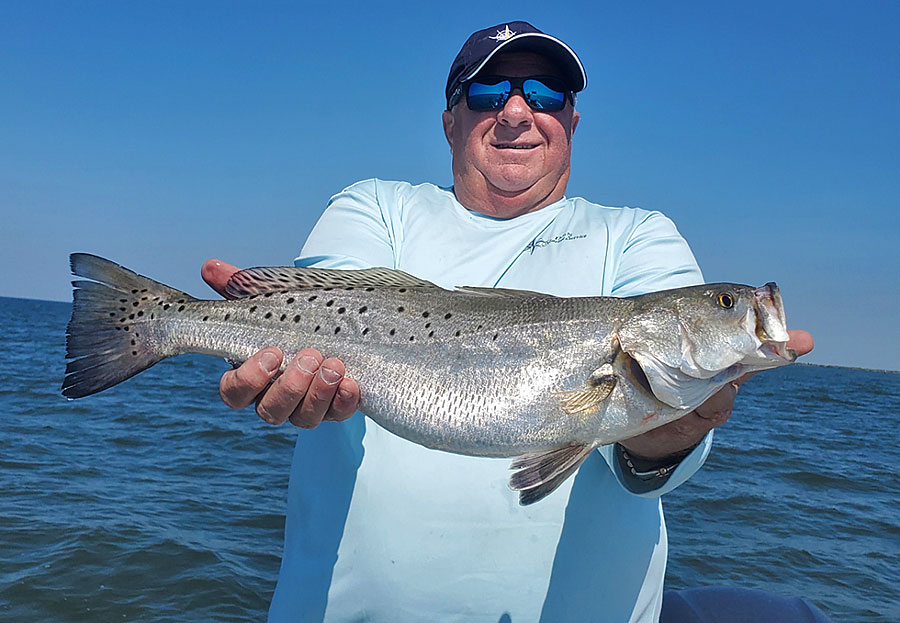
Carrying capacity
One of the ways biologists approach the question of whether there is an appropriate number of gamefish in an ecosystem is to consider the carrying capacity of that area. Carrying capacity in aquatic ecology refers to the maximum number, density, or biomass of fish that a water body can support under ideal natural conditions without feeding and fertilization. This is a calculated value that takes into account inputs such as acres of vegetation or cover, the biomass of various fish species, the recruitment percentage of fish species and so on.
Calculating the carrying capacity is obviously a complicated task, but the good news, according to Randy Pausina from the Recreational Fisheries Research Institute (RFRI), is that the Louisiana inshore aquatic ecosystem has a very high carrying capacity. Pausina, the founder of RFRI, is a marine fisheries biologist and the former Head of Fisheries for the Louisiana Department of Wildlife and Fisheries.
Pausina said that even though we have had so much land loss, Louisiana is still blessed with ample carrying capacity because even the eroding marsh provides healthy ecological zones. This holds true for 2024, but once we lose the habitat, we lose the fish.
The marine ecosystem, just like in terrestrial systems, seeks to balance the ratio of bait to predators, and so if the biomass of bait falls it will quickly bring down the biomass of predators. Pausina has participated in countless studies where trout are harvested and dissected, and the trout are not starving. This is an indicator of a balanced predator to bait ratio in our estuary.
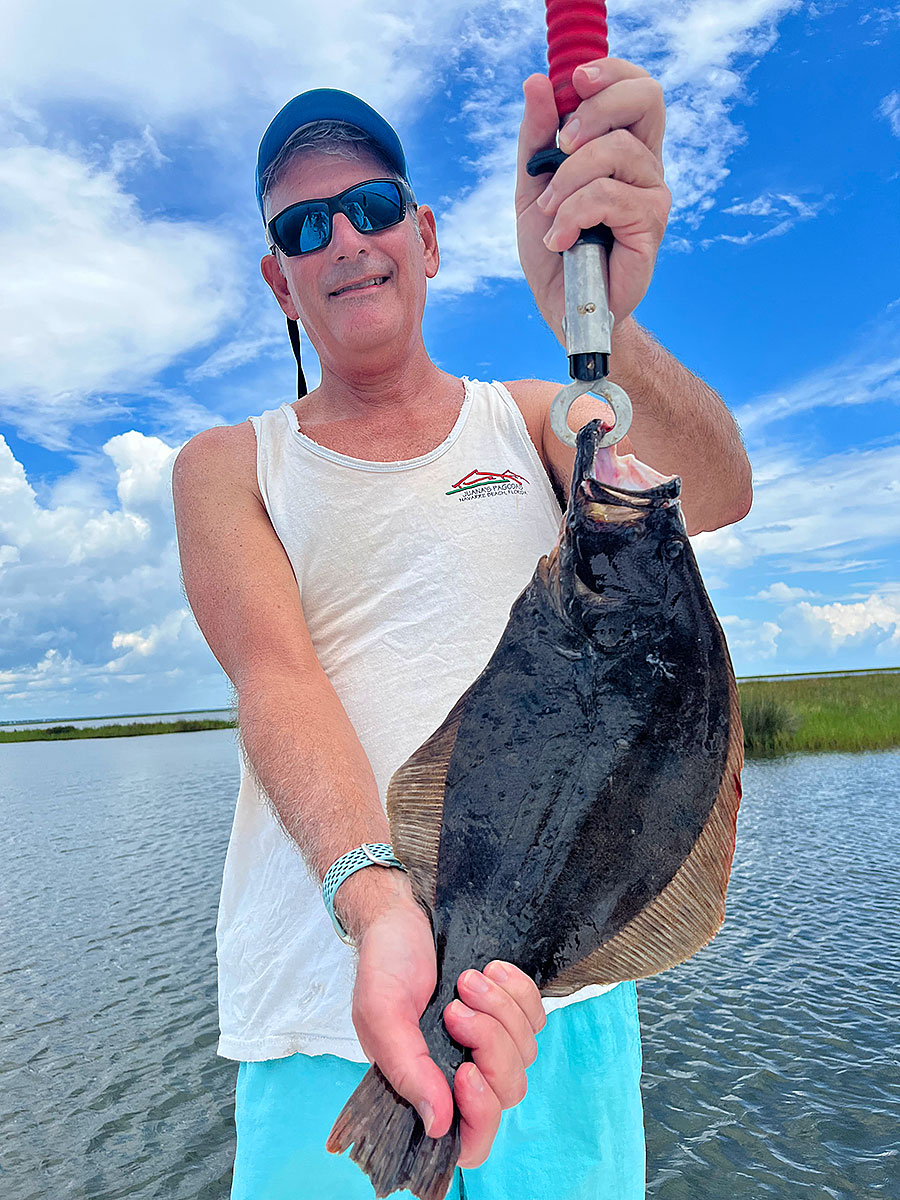
However, observationally I believe the ratio of bait to predators may be a bit unbalanced, by which I mean there are less predators than the maximum which could be supported by the bait biomass. The current Louisiana Wildlife and Fisheries administration also believe this to be the case, which is why in the last year they have reduced both the speckled trout and red drum daily creel limits and are increasing the minimum legal lengths of these species.
Fishery biomass
If we are experienced anglers, there is a lot of practical knowledge we will gain from observations on the water. Couple that experience with modern sonar, an ability to effectively work baits, multiplied by thousands of boats, and we become a formidable harvesting army. In fact, the biologists I talked with all thought that anglers with modern equipment have the potential to remove a lot of gamefish from an ecosystem and lower the biomass.
However, there are also environmental factors that affect the amount of trout, redfish, and flounder we encounter on the water.
Pausina said that if you think there are much fewer or much more trout swimming in your area in a given year, look at the environmental conditions two to three years prior for a better assessment of the current situation. For instance, Pausina said one of the big factors affecting trout numbers today is the salinity that we had several years ago. A summer of low salinity will result in far fewer eggs becoming fertilized or surviving the first week after the spawn. This negatively impacts the trout recruitment several years later, which then becomes noticeable to anglers.
Some state fishery programs, such as Texas and Florida, regulate recreational limits on gamefish based on frequent stock assessments, which can result in yearly changes to the speckled trout and redfish limits. This could be driven by a severe freeze, which has been the case recently in Texas, or in central Florida where high water discharges coming from Lake Okeechobee causes red tides on both coasts. In some years red tide has killed nearly all the fish in places such as Sarasota Bay. In order to recover the speckled trout stock in Sarasota Bay, a regulation was quickly passed to prohibit the harvesting of all speckled trout.
When a reduction in recreational harvest is the only knob to turn, it places all the sacrifice on anglers. Consequently, an organization called Captains for Clean Water was formed in Florida to represent recreational anglers’ interests through advocating for changes to the discharge practices from Lake Okeechobee.
The effects of commercial fishing, both catches and by-catch (“unintentional” harvest) must also be considered.
I consider myself to be conservation minded and regularly practice catch and release of larger speckled trout and redfish. However, it seems to me that recreational harvest limits should not be the only action taken to protect our fishery, especially if there are other actions available.
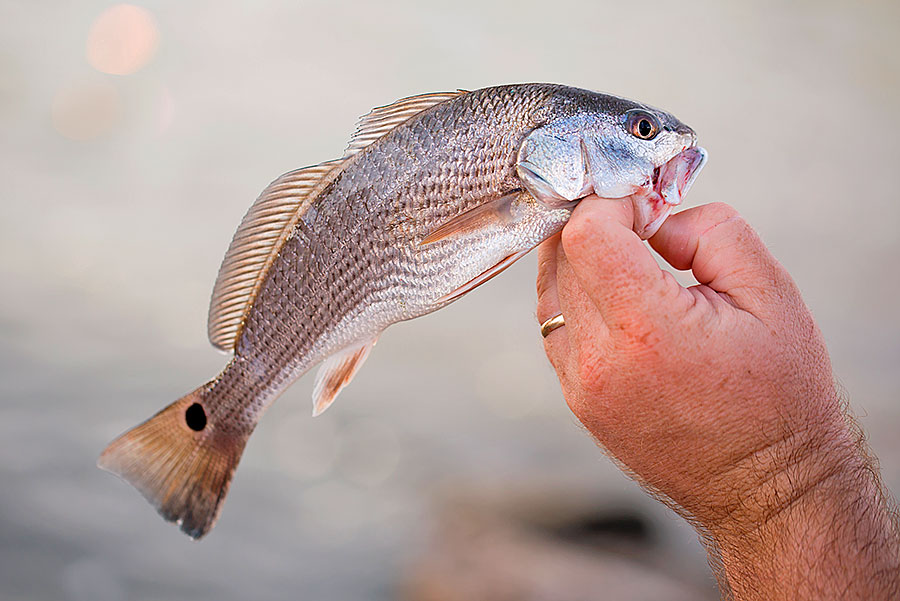
Fishery stock enhancement
I had a conversation with Shane Bonnet of the Texas CCA about healthy ecosystems and fishery management. Bonnet is a marine biologist and a former hatchery manager for Texas Parks and Wildlife.
There are two saltwater hatcheries on the Texas coast, which are located at Corpus Christi and Fort Jackson, and they produce red drum, speckled trout, and other species for the purpose of enhancing the wild stock of these species. These hatcheries release approximately 25 million juvenile marine finfish per year of an average length of 1.5 inches.
Bonnet explained that the annual stocking plan is based on the previous year’s recruitment numbers. The recruitment numbers are determined by the capture of wild fish using bag seines and nets and this information is fed into statistical models to produce a habitat-wide analysis of the fish stocks.
The fishery program also performs genetic analysis on some of the captured fish to identify which ones have come from a hatchery. The hatchery fish can be identified for generations beyond the original released fish, and so the biologists can evaluate the ongoing effectiveness of the hatchery efforts. One of the aspects that is studied through genetic tracking is the reproductive success of hatchery fish. Some species have lower reproductive success from hatchery fish than from wild fish and the concern is that interbreeding will reduce the reproductive success of the wild stock.
I visited the Thad Cochran Marine Aquaculture Center (TCMAC) at The University of Southern Mississippi in Ocean Springs where Angelos Apeitos, who is the hatchery manager, gave me a tour of their hatchery program. I left with the understanding that raising speckled trout and redfish in a hatchery is very possible, effective, and can be sustainable. The TCMAC supplies the Mississippi Department of Wildlife, Fisheries and Parks with fish for stock enhancement as needed. The center can even use adult fish from a specific coastal zone to produce fingerlings that have similar genetics to the wild fish.
While there are concerns about decreased reproductive success among hatchery fish, the science of raising marine gamefish in hatcheries for stock enhancement is well established and practiced in the Gulf States of Texas, Mississippi and Florida. Having the capability to enhance the fish stocks through hatchery releases lightens the burden put on recreational anglers when a fishery management strategy leans heavily on recreational harvest limits. Is there a path forward for hatcheries in Louisiana?
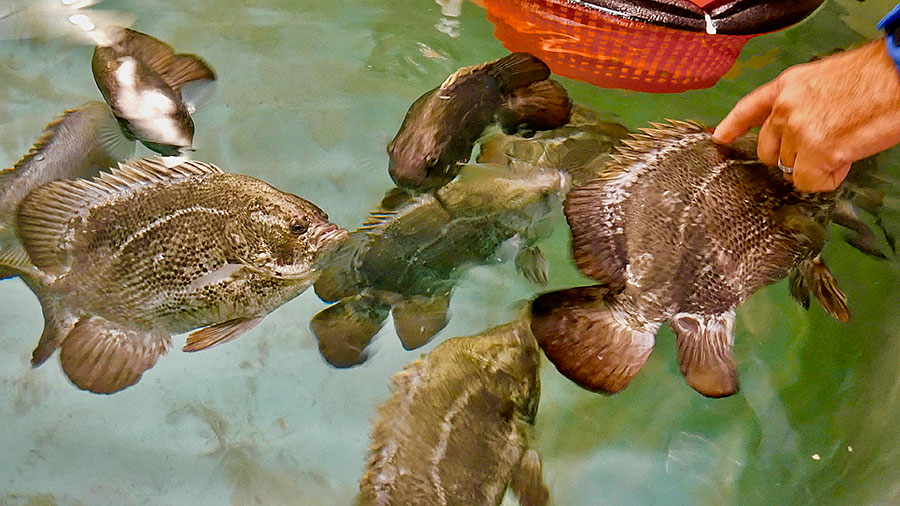
Louisiana hatchery efforts
Pausina told me that RFRI obtained a six month permit to raise fish for stock enhancement in Louisiana. That permit has now expired, but RFRI is currently applying for a long-term permit that will give them time to fund, build, and operate a hatchery in Louisiana.
Pausina said he is not concerned about the funding for a hatchery because he believes there is enough interest in stock enhancement that the money will be available. A cooperative example of hatchery funding is seen at the Corpus Christi hatchery in Texas which is funded by three conservation-minded groups plus their state Sport Fish Restoration Act. The funding groups are the TX CCA, American Electric Power, and the Texas Parks and Wildlife Department.
Among possible funders in Louisiana, it seems reasonable that those commercial fishing companies who produce significant bycatch, could also be required to pay into a stock enhancement fund in proportion to the amount of bycatch or ecological damage they produce.
While it could be a difficult endeavor, I hope that in Louisiana stock enhancement through hatchery programs is given serious consideration. I believe the examples from other states show that it works, and it would let more parties in Louisiana carry the load for fishery stock management.
